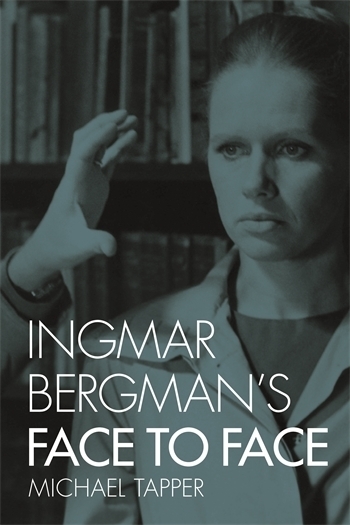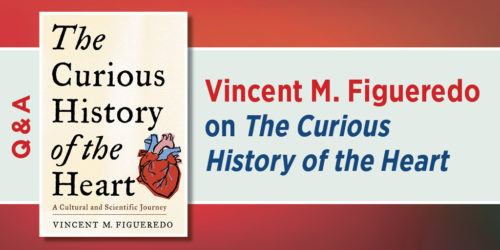Q&A: Michael Tapper on Ingmar Bergman’s Face to Face

This week, our featured book is Ingmar Bergman’s Face to Face. Today, we are happy to present an exclusive interview with author Michael Tapper.
Q: Why another book on Ingmar Bergman?
A: That is the very first sentence in my book and it is an obvious question considering the numerous books on the director. In the introduction to Ingmar Bergman’s ‘Face to Face’ I answer it with an outline of how previous books on Bergman and his films have either ignored or just briefly touched on the production, only to dismiss it by using one of Bergman’s own derogatory remarks on the work in interviews or from his book The Magic Lantern. Interestingly, he somewhat revised his opinion in the book Images (p. 66), where he writes:
In The Magic Lantern, I dismiss it briefly and lightly. Earlier on I simply dismissed it or declared it an idiot. That is, in itself, slightly suspicious. Now I see it like this: from the beginning and up to the main character’s attempted suicide, Face to Face is perfectly acceptable. The story is clearly told, though rather compressed. There are no real weaknesses in the material itself. If the second part had maintained the same level as the first, the film itself would have been saved.
I might have had these words of regret (well, somewhat) in the back of my mind when I bought the 2011 American DVD of the film version (it was also edited as a longer, four-part TV version in Sweden). Not only was the transfer poor in quality, the DVD also lacked bonus material and the release was not marketed at all. I found this to be odd. After all, Face to Face was made when Bergman was at the height of his international fame.
He had just finished two celebrated TV productions, Scenes from a Marriage and The Magic Flute. Both were distributed in cinemas all over the world to rave reviews. At the time of its original release in 1976, Face to Face too was met with great anticipation and got much the same positive treatment as its predecessors, although there were some negative reviews.
What happened? Why did it disappear after its initial release to be hardly ever shown in the decades that followed? Why did no one take any deeper interest in Face to Face? The next logical step after finishing my book Swedish Cops: From Sjöwall & Wahlöö to Stieg Larsson in 2014, was therefore to plunge into my very own research project on Face to Face.
Q: How did the research proceed?
I had only a very general idea that I wanted to map the whole production, from its very early beginnings to the aftermath. Since I never subscribed to any Grand Theory – i.e. a preconceived idea of how to analyze his work and perhaps also what I could expect to find – I proceeded with the work with an open mind. Besides my academic training as a researcher in film, I also have a Master’s degree in journalism and 30 years of experience in writing for encyclopedias, newspapers, journals and magazines.
When writing an academic study, I aim to make it accessible and enjoyable also for the general public with an interest in cinema and the subject of the book. Sure enough, this book turned out to be a fascinating story about one of the most famous names in art cinema re-inventing himself as an artistically innovative and popular TV-producer-director-screenwriter with his own company Cinematograph. The research process was like that of any historian or investigative journalist: going to the sources, digging into the archives.
At the Ingmar Bergman Archives in Stockholm I read his workbooks and engagement planners from 1966 to 1979. These were not only instrumental for writing material to his films or making notes of meetings and engagements, he also used them as diaries, scribbling down thoughts, dreams and reflections on books he read or films he watched. I consequently read the books he had read, saw the films he had seen. From them I learned much about how he thought and what captured his interest at the time of making Face to Face.
That had to be completed by a research into Bergman as a public persona, how he and his work were perceived and the many debates about him; quite a few of them were instigated by himself. That meant going to the newspaper, radio and TV archives for reviews, articles, interviews, debates, talk shows etcetera. It was there I noticed how Bergman managed to reinvent himself for the Swedish audience. From having been considered as navel-gazing and passé in the late 1960s, he became popular – loved, even – by the time his 1973 series Scenes from a Marriage premiered and was hailed as a television milestone.
Q: What are the main discoveries about Bergman in the book?
Besides his image makeover it could be summarized in a few words as: TV, Henrik Ibsen, primal therapy and politics. He did not choose TV just out of financial necessity when the film industry faced a severe crisis, he actually loved the new medium and longed to explore it as an artist. It was technically primitive, which suited the austere style with little scenery he had perfected in the late 1960s.
Much has been written about Bergman’s artistic relationship with August Strindberg, but in the 1960s and 70s Henrik Ibsen became an important source of inspiration. Bergman staged several of Ibsen’s most important and influential plays, and updated both Ibsen’s themes and modernist strategies in his TV productions. The most obvious case is Scenes from a Marriage, in which Ibsen’s A Doll House is explicitly referenced.
For anyone who lived through the 1970s, the cultural impact of Arthur Janov’s primal therapy is unforgettable and Bergman was one of many who were spellbound. He not only read Janov’s then-bestselling books and let the famous psychiatrist’s ideas flow into the work on Face to Face, working title: “The Psychiatrist”, he also contacted Janov and met with him at the Primal Center in Santa Monica. There were even talks about them working on a film project together, but the tax-evasion scandal in April 1976 put a stop to these plans.
Politics was also central to Bergman’s work in this period, although no scholar has really touched on the subject. Frequently, texts on Bergman imply that he was an opponent to the social democratic politics that shaped post-war Sweden. In fact, the opposite is true. He was a fervent supporter of the social democratic party, considered himself to be a socialist and even contemplated going into politics in the early 1970s. This can be supported by several interviews.
More complicated was his relationship with feminism. He considered himself as feminist and was convinced that he had more feminine than masculine sensibilities, but second-wave feminists in Sweden as well as in the US did not agree. They attacked him and his films for lacking a social and political dimension. While they acknowledged that he could be an apt observer of the perversions of patriarchal ideology, they still attacked him for propagating its core ideas about men being intellectual creatures of culture and women being emotional creatures of nature. I suggest that the critique was based on a misunderstanding, a failure to grasp his use of Ibsen’s modernist strategies to attack the bourgeois family and its patriarchal foundations.
Q: Do we get any glimpses into his work process?
Yes, the main body of the text is a walk through the workbooks and engagement planners pertaining to Face to Face. It is, I believe, the first time anyone has deciphered longer passages of his crabbed handwriting. In extensive quotes and comments, we will follow the work from the earliest sketches in the Spring of 1974 to the premiere of film and TV versions two years later.
This, I believe, will not only shed a light on an ignored production but also on Bergman as an artist and a person. It is important to remember that he wrote Face to Face in splendid isolation on Fårö, far from the maddening crowd in Stockholm. He decided to spend more time on this screenplay than any of his previous ones, searching into the darkest corners of his mind, throwing in his wildest ideas and strangest dreams into a fascinating mix of dreams and reality.
He envisioned Face to Face as his ultimate achievement in cinematic poetry, a work that would break free from all forms of storytelling. The result was neither a misunderstood masterpiece or a laughable turkey. Perhaps it could best be described as a fascinating idea that got lost during its journey from the drawing board to the screen.
In hindsight, Face to Face is one of the most interesting of Bergman’s projects. It could have become the crowning achievement of his career, but ultimately it failed to fulfil his original vision. Reading his notes, I learned much more about him and his works than I imagined beforehand. I hope my book conveys these insights and the thrill that captivated me throughout my research.
Remember to enter our book giveaway by Friday at 1 PM for a chance to win a free copy!





